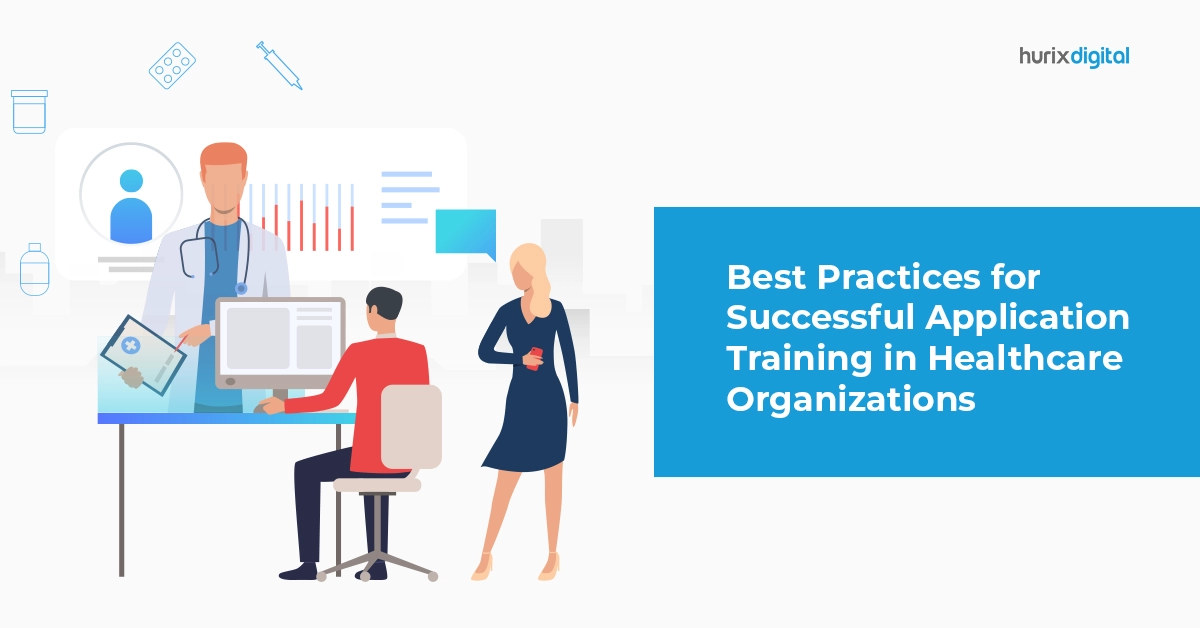Invested lately in a new ERP or CRM system or a simple HR or payroll solution? Organizations today are increasingly investing in new systems and technology. The pandemic seems to have further accelerated technology adoption, especially for cloud technologies. And this is definitely exciting.
Table of Contents:
- Challenges of a New Training Software
- 5 Key Strategies to Build an Effective System Training Program
However, the other side of the coin is that organizations globally witness poor technology adoption rates. Now, why is that a problem? When organizations do not gain full potential of the new system, it translates into poor ROI.
The new systems implemented, perhaps after much deliberation and with pomp and fervour, simply fail to deliver the expected value. Poor adoption becomes a barrier to successful transformation and fails on its promise and premise of delivering improved workflows.
Know More: How to Design Learning Paths for Employee Training & Development
Poor adoption or inefficient use of new systems has a high cost impact. While the most imminent and direct cost is the cost of system ownership itself, add to it the cost of customization, implementation and configuration, maintenance, support, and training, and that drives up the total costs of any new system implementation.
With such costs showing in your expense sheet, organizations not reaping the full potential of the transformation or change exacerbates total costs and spend.
Know More: Supercharge Your Employee Training Program with Bite Sized Learning
Consider the costs associated with under-optimal utilization of new systems, procedural errors, and inefficiencies evidenced as employees are on the learning curve. Some of this would be impossible to compute.
So, if you add a notional cost, you’d arrive at a whopping cost of new system implementation. Ensuring the success of adoption, therefore, would be an organization’s obvious imperative. So, how to ensure better ROI?
Challenges and Pitfalls of a New Training Software That Organization May Face
Two key challenges or pitfalls organizations face in system adoption initiatives:
1. Lack of thought, structure, and investment in the adoption process.
Technology change is more than installing a software and expecting employees to embrace and internalize it – it’s a cultural change. Organizations often fail to give due cognizance to the ‘mental’ transformation that needs to occur. People are creatures of habits. Getting them to embrace new technology when they may be comfortable using existing methods requires careful and mindful planning.
Know More: How Can You Use mLearning in Employee Training?
2. Lack of adequate and appropriate training and support.
Training can often make or break a transformation initiative. When employees are not fully capable of leveraging the new technology, organizations do not get the desired gains from the new systems. Combine it with the Need
The rate of digital change is huge today. Whether it’s new systems or software, upgrades, or release cycles, digital change is inevitable and integrated in the way business is done today. There is a need for efficiency in proficiency – employees need to be proficient and quick to reap the most of digital initiatives. Organizations must seek to build a mindset of adoption as newer systems become the norm.
So, how can you train your employees on a new system?
Know More: Top 7 Factors to Consider When Choosing Employee Training Software
5 key strategies that can help build an effective System Training Program:
1. Roll in the change
Any adoption goes hand in hand with a cultural and organizational transformation. Employees must get to see the bigger picture and understand business drivers – tell them how the technology can help them and the business at large. On-board your employees ‘culturally’ for the transformation journey well before you train them on the technology. Educate employees about the process and get an early buy-in to ensure readiness.
Leadership buy-in, mailers, events, leadership videos, and surveys are all excellent onboarding tools.
Time it right and build the momentum. Avoid stress and frustration by making it a smooth and transparent process.
Remember that while the system purchase decision is made by leadership and marks the start of a journey, the success of adoption is driven by end-users.
Know More: Supercharge Your Employee Training Program with Bite Sized Learning
2. Provide the right training at the right time
While software tools are getting more intuitive and user-friendly, and users today are digitally immersed and tech-savvy, a lot depends on the right training program.
Have a clear, holistic training plan and strategy and leadership buy-in at the outset. Use a structured, carefully crafted design approach for your system or software training.
An effective software training is relevant and engaging.
- Relevance: Employees remember information when it is relevant to them. Adults learn and retain best when the information is of immediate use and the skills acquired can be applied.
- Engaging Format: A 60-page manual, 3-hour classroom/virtual session, chatbot, coach, etc. will not make users look forward to the adoption journey. Adults learn best when they are engaged – they ‘see’ and practice. Use the tell-show-do approach. Increasing levels of immersion ensure learner engagement and improved retention.
- Ensure modalities that allow viewing system demonstrations and provide ample practice opportunities. Practice modes can also be tracked to provide insightful analytics into system aspects that are clear to users and where users may face challenges. This can help charter efforts in the required direction.
The Forgetting Curve suggests that users forget 90% of what they learn within a month. So, time your training right – training employees a month in advance is likely to be a waste of effort.
3. Allow adequate time
Given more new things to learn and busier work schedules, training often becomes a tedious chore, so plan and allocate adequate time.
Sessions organized when you know your employees are likely to be busy will get you fairly unwitting trainees. Similarly, training scheduled close to or after the system launch adds unnecessary pressure on users to master the system quickly.
4. Ensure availability and ease of accessibility
Employees often seek champions, colleagues, or managers for help or look up the system Help section. This loss of collective productive time adds to delays and costs.
The purpose of technology is to bring in efficiencies, but it achieves just the opposite in the absence of the right training. In-app training or just-in-time interventions with micro-learning modules work best.
Keep the training contextual and specific; a role- or function-based structure does not overburden users with information that they might not need. When structured in focused modules with clearly defined learning objectives, users can access the required training easily.
5. It’s not a one-time intervention
Effective training programs need to be continuous. Information is lost over time when there is no attempt to retrain.
To ensure stickiness, a training plan should include interventions at regular intervals. Use strategies such as meeting the SME/process champion, tests, videos, mailers, Q&A, and follow-up sessions.
When placed correctly, these can be effective ways to reiterate and reinforce information.
Know More: 7 Interactive eLearning Solutions for Employee Training
In conclusion:
With the constantly evolving technological advancements, it is essential for employees to continuously upskill themselves. The strategies mentioned above will help you build a training plan whereby you can effectively train your employees on new systems and applications.
Need to know more about our products and services? Drop us a note on marketing@hurix.com











